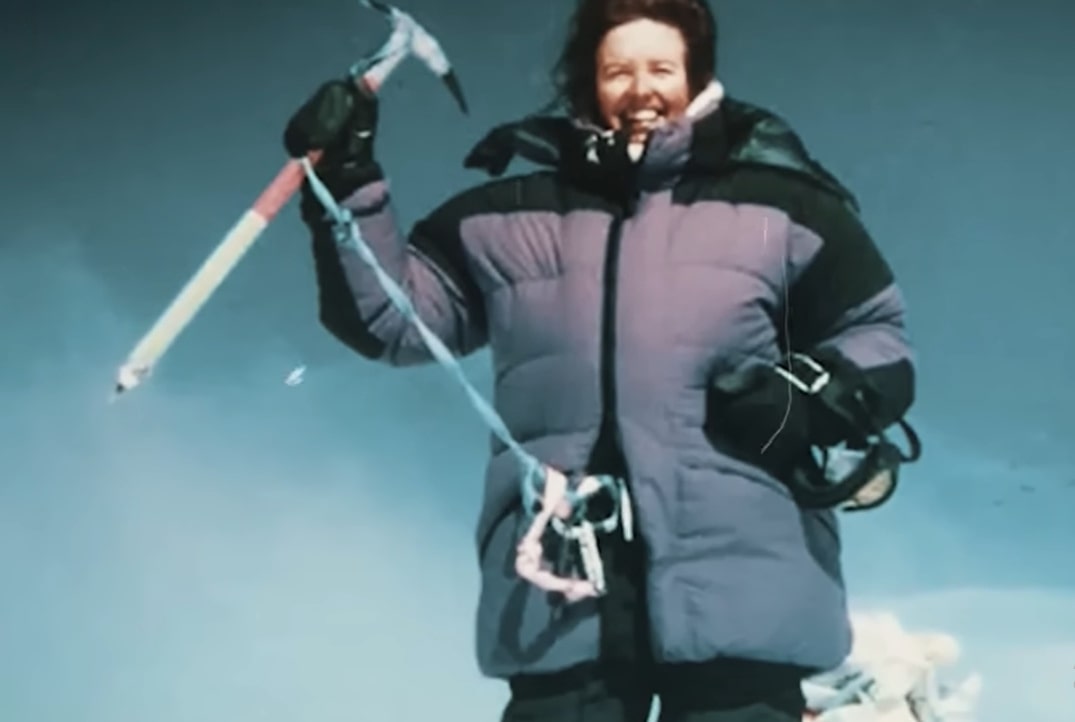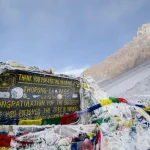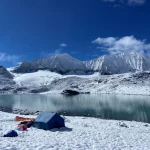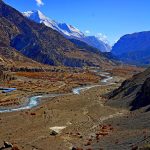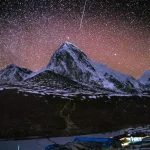Sleeping Beauty of Mount Everest: The Tragic Story of Francys Arsentiev
Have you ever heard of the Sleeping Beauty of Mount Everest? This is a tragic story of the brave mountaineer Francys Arsentiev, and in this article, we will provide a proper explanation of the real story behind it.
At 8848.86 meters, Mount Everest is the highest peak in the world and the quintessential representation of high-altitude climbing and Himalayan expeditions. However, we must remember that this enormous peak in the Khumbu region also symbolizes the dangers and difficulties of surviving in a death zone.
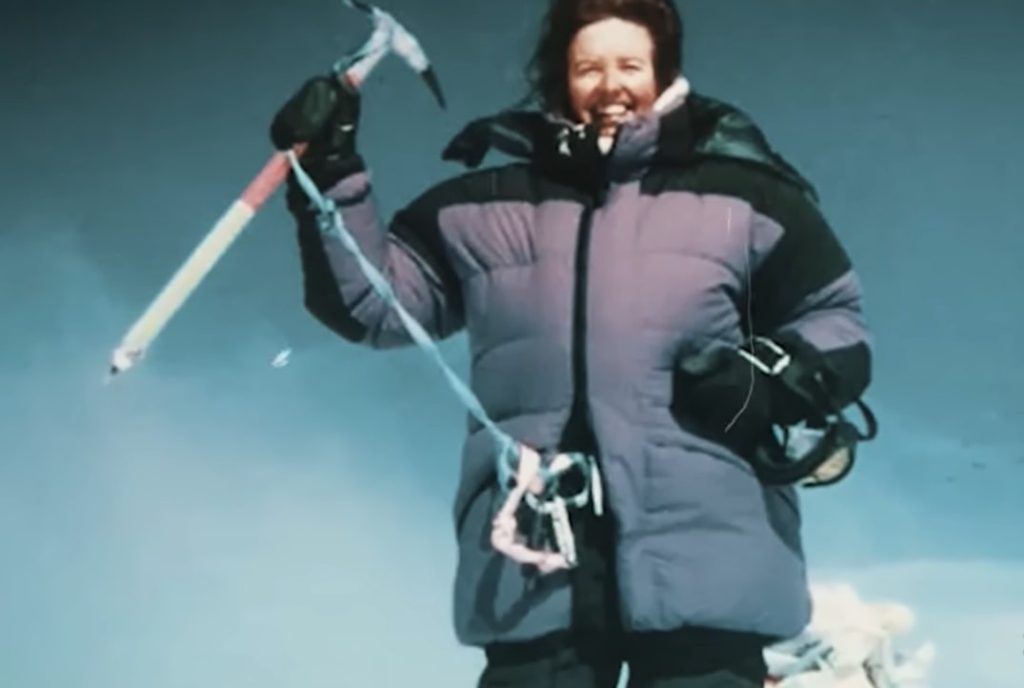
Beneath the deep snow and breathtaking vistas are the Everest death zone and Rainbow Valley, where climbers have never returned. Unfortunately, the goal of climbing the world’s highest mountain does not always go as planned; occasionally, things go in a different direction.
More than 340 people have died during the Everest expedition to date, and the majority of the dead bodies are still visible on the mountainside as silent monuments. Similar to these, we are going to learn about one of the most haunting stories of the Everest death zone, which is of Francys Arsentiev, forever remembered as the Sleeping Beauty of Mount Everest.
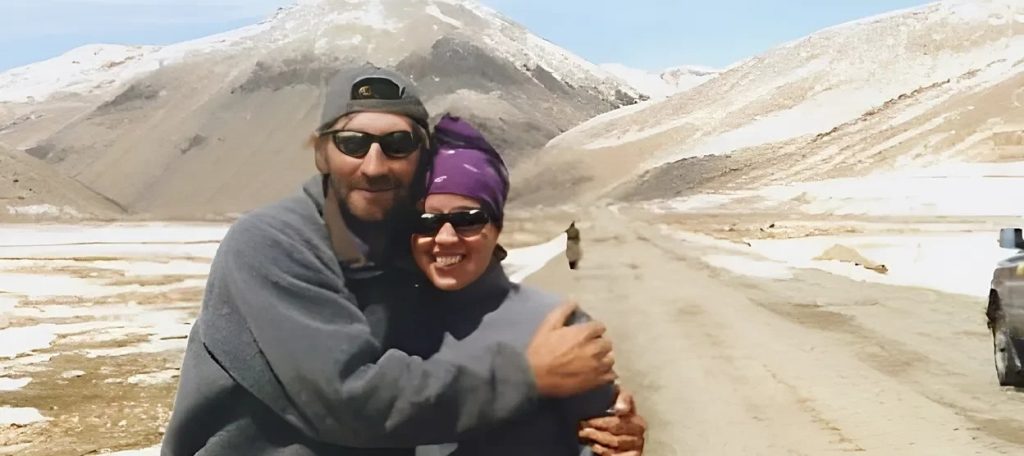
Her story serves as a metaphor for the fine line that separates mountaineering tragedy from Everest summit triumph. I hope this article helps you learn more about the perils of climbing Everest and the detailed account of Sleeping Beauty. For more Everest stories, explore our Everest Expedition Guide.
Who Was Francys Arsentiev, the Sleeping Beauty of Mount Everest?
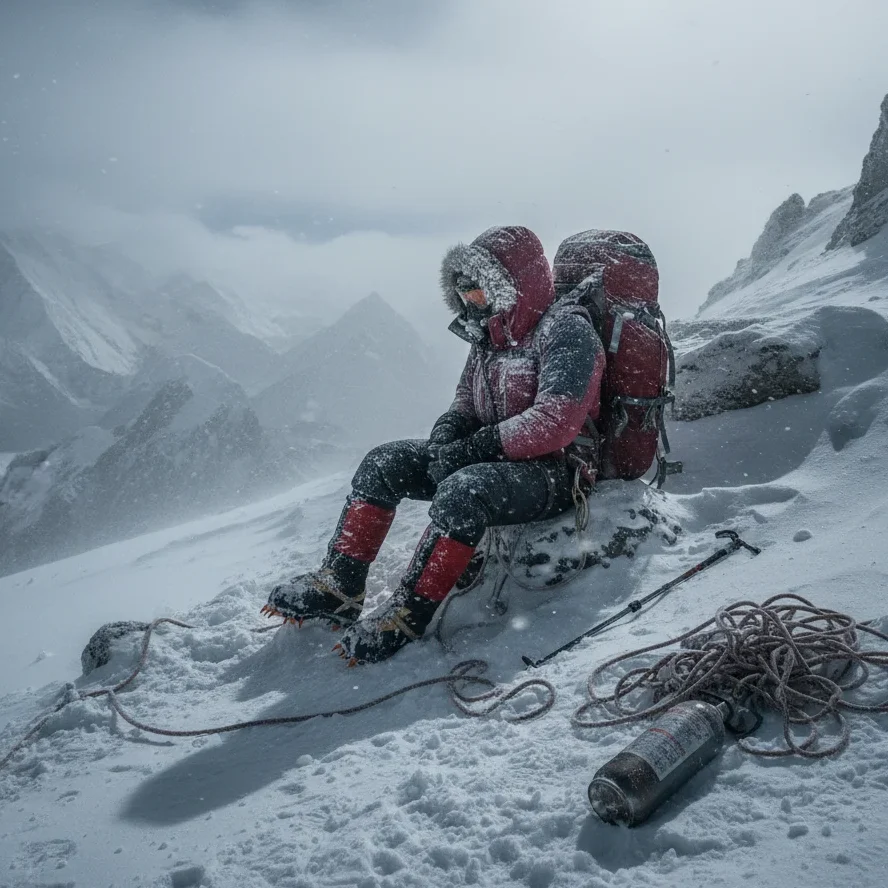
Born in 1958 in Honolulu, Hawaii, Francys Arsentiev spent her childhood in Colorado. As a child, she had a deep love for the outdoors and adventure.
She gradually developed a passion for mountaineering and went on to climb several peaks both domestically and overseas, including the well-known Denali, also called McKinley. She met Sergei Arsentiev, a talented Russian climber, at this summit, and they eventually got married. Together, they climbed numerous mountains in Europe and the United States after becoming a mountaineering couple.
Like all mountaineers, she always dreamed of reaching the top of Mount Everest, but this time, she wanted to do it without the extra oxygen, which had never been done by an American woman. It was extremely dangerous.
Moreover, Francys did not train as a sponsored athlete or a commercial mountaineer; rather, she did it as a challenging hobby.
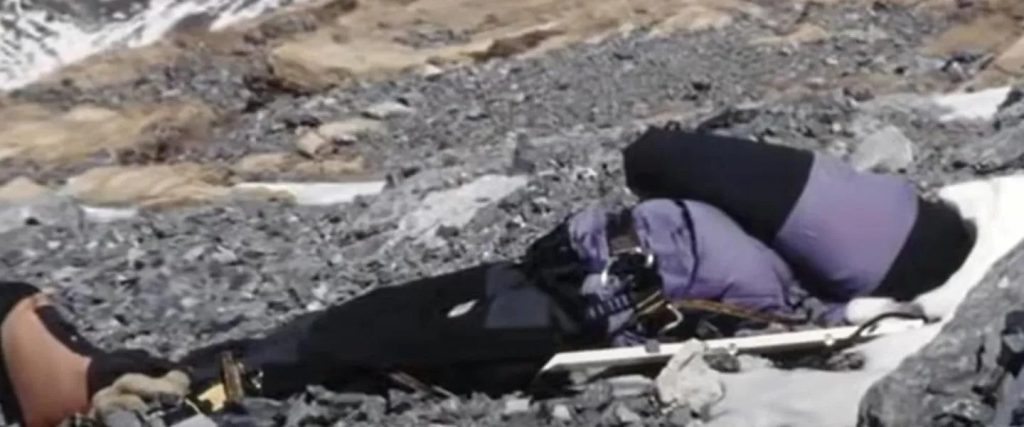
In 1998, she made her final attempt at the Everest expedition with her husband, Sergei, but several attempts failed due to weather and fatigue. She disregarded the warning signs of the bad weather and relied solely on her dreams. Eventually, on May 22–23, 1998, she became the first American woman to reach the top of Everest without using oxygen bottles.
Although the summit went well and she set a record, the descent was disastrous because she was unable to continue due to a lack of oxygen and extreme cold. She gave up during her descent and died alone on the route.
As the Sleeping Beauty of Mount Everest, she represents the bravery and danger of climbing at high altitudes.
How Did Francys Become the “Sleeping Beauty of Mount Everest”?
Now that you are aware of Francys’s background, let’s examine the terrible event in greater detail and discover what truly earned her the nickname Sleeping Beauty of Everest.

The tragedy starts on May 22, 1998, when she and her husband, Sergei, successfully climbed Mount Everest without oxygen. Since she arrived at the summit later than they should have due to fatigue and delays, that was the actual issue.
Because of this, the couple had to spend the night in the Everest death zone, which is located above 8,000 metres, where they were subjected to bitter cold and low oxygen levels.

Descent Complications & Separation: On the way down (late May 22–23), the couple became separated under harsh conditions. Sergei went ahead/down and then attempted to return with oxygen and medicine to help Francys. Himalayan Treks & Expeditions, Swotah Travel
First Encounter by Uzbek Climbers: On May 23, 1998, a team of Uzbek climbers descending from the summit found Francys in a semi-conscious state, suffering from frostbite, oxygen deprivation (hypoxia), and exposure. They attempted to help her and carried her down somewhat, but exhaustion and danger forced them to leave her. Access Nepal Tour and Trekking, Ultimate Kilimanjaro, Himalayan Treks & Expeditions
Final Encounter & Death: On May 24, 1998, climbers Ian Woodall (UK), Cathy O’Dowd (South Africa), and some Uzbeks encountered Francys again near the same spot. She was alive but extremely weak, unable to move. After trying to assist her for over an hour, they were forced by altitude, cold, and deteriorating conditions to abandon the rescue. That morning or shortly after, Francys died on the mountain. Ultimate Kilimanjaro, Wikipedia, Nepal Independent Guide
Sergei’s Fate: Sergei Arsentiev’s last seen alive during this period was when he was returning (or going up) in search of Francys. His body was found the following year (1999) on the mountain, apparently from a fall while trying to rescue her. Ultimate Kilimanjaro, Wikipedia
“Sleeping Beauty” Nickname: Because Francys’s body remained in a peaceful, repose-like state—clipped to fixed rope or harness, appearing almost as if sleeping—the climbers started calling her the Sleeping Beauty of Everest. Her body remained visible on the slopes for many years. Alpine Eco Trek, Wikipedia, Himalayan Treks & Expeditions
Posthumous Movement of Her Body: Her frozen body was visible from 1998 until May 23, 2007, when climber Ian Woodall organized a small expedition (“The Tao of Everest”) to move her body out of view of climbers and cameras. Everything Explained Today, Himalayan Treks & Expeditions
The Everest Death Zone: A Harsh Reality
The Everest death zone, located above 8,000 meters (26,247 feet), is where the air is so thin that oxygen levels cannot sustain human life for long. Climbers face extreme cold, with temperatures dropping to -40°C (-40°F), and severe risks of hypoxia, frostbite, and altitude sickness.
The death zone is notorious for its unforgiving conditions, where even the strongest climbers can succumb to exhaustion or sudden changes in weather. Francys Arsentiev’s tragedy highlights the perilous nature of this region, where survival hinges on precise timing, adequate supplies, and luck. For more on Everest’s challenges, visit Mountaineering Safety Guide.
Ethical Dilemmas in High-Altitude Rescues
Francys’s story sparked intense debate about the ethics of high-altitude rescues. The Uzbek climbers and Ian Woodall’s team faced impossible choices: risk their own lives or leave Francys in the death zone. Rescuing someone at 8,000 meters requires immense resources—oxygen, energy, and time—that climbers often lack.
The decision to abandon Francys, though heartbreaking, reflects the brutal reality of Everest’s death zone, where self-preservation often takes precedence. This ethical dilemma continues to shape discussions in the mountaineering community, raising questions about responsibility and survival. Learn more about climbing ethics at Alpine Ascents International.
Psychological Impact of Mountaineering Tragedies
The story of the Sleeping Beauty of Mount Everest leaves a lasting impact on climbers and adventurers. Witnessing or hearing about tragedies like Francys’s can lead to survivor’s guilt, post-traumatic stress, or a reevaluation of mountaineering goals.
For Francys’s son, Paul Distefano, the loss was compounded by a premonition he had before her climb, adding a personal layer of grief. Her story serves as a reminder of the psychological toll of Everest, where ambition meets mortality. Climbers often reflect on these tales to prepare mentally for the mountain’s challenges. Explore mental preparation at Adventure Consultants.
Practical Tips for Everest Aspirants
For those inspired by Francys’s courage but sobered by her tragedy, climbing Everest requires meticulous preparation. Here are key tips to enhance safety:
- Physical Training: Build endurance with high-altitude simulations and cardiovascular exercises for 6–12 months.
- Acclimatization: Spend weeks acclimatizing at base camps to reduce altitude sickness risks.
- Oxygen Use: Unlike Francys, consider supplemental oxygen to increase safety margins in the death zone.
- Weather Monitoring: Check forecasts obsessively, as sudden storms can be fatal.
- Team Support: Climb with experienced Sherpas and a reliable team to ensure assistance.
- Emergency Gear: Carry extra oxygen, radios, and warm clothing for unexpected delays.
For detailed preparation, see our Everest Climbing Guide.
Frequently Asked Questions
To help plan your Sleeping Beauty of Mount Everest-inspired journey, here are answers to common questions:
- What is the Sleeping Beauty of Mount Everest? The Sleeping Beauty of Mount Everest refers to Francys Arsentiev, who died in 1998 after summiting without supplemental oxygen. Her body, appearing peaceful, earned her the nickname.
- Why couldn’t Francys Arsentiev be rescued? Rescuing her in the death zone was nearly impossible due to extreme cold, low oxygen, and the climbers’ own exhaustion. Teams tried but prioritized their survival.
- How dangerous is climbing Mount Everest? Over 340 climbers have died on Everest, with risks including hypoxia, frostbite, and avalanches. The death zone above 8,000 meters is particularly lethal.
- What happened to Sergei Arsentiev? Sergei died in 1998, likely from a fall while attempting to rescue Francys. His body was found in 1999.
- How can I prepare for an Everest climb? Train physically, acclimatize properly, use oxygen, monitor weather, and climb with a skilled team. Check our Everest Preparation Tips.
Conclusion
The story of Francys Arsentiev, the Sleeping Beauty of Mount Everest, is a poignant reminder of the courage and risks inherent in high-altitude mountaineering. Her ambition to summit without oxygen made history, but her tragic descent highlights the unforgiving nature of Everest’s death zone. At Nepal Adventure Trail, we honor her legacy by offering safe, guided expeditions to Everest and beyond. Contact us at info@nepaladventuretrail.com or +977 9851410929 to plan your Himalayan adventure. Book Your Everest Expedition Now.
Tags: Sleeping Beauty of Mount Everest, Francys Arsentiev, Everest death zone, mountaineering tragedy, Himalayan expeditions, Everest summit, high-altitude climbing
